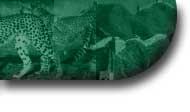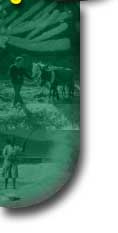





 |
 |
||||
 |
 |
 |
 |
||
 |
|
 |
|
A Profile on Gorilla Conservation in AfricaBy Allie, Amy, and David Steinmetz Overall: The Tanya Gorilla Reserve is really important because not only does it save a lot of gorillas by giving them food and homes, but it also provides local people with jobs. The reserve is the foundation of a community; for example, a new college has been established, bringing many students to the town.
Background: The Tayna Gorilla Reserve is in the Lubero Province, which is a part of North Kivu Province. It is very biodiverse, meaning that it is home to many native and rare species. The location is very far from cities and technology, so the natural resources that make up the animals’ diets and shelters has not been ruined by human activities such as mining or cutting trees down to make other human goods (like furniture). Sadly, however, the area has been ravaged by a civil war that has already killed over 3 million people who come from two tribes called Batangi and Bamati. Many children have become orphans as a result, and the gorilla population has decreased by 70 percent to only about 5,000 gorillas. The Tayna Gorilla Reserve was started in 1998 by Conservator in Chief Pierre Kakule Vwirasihikya. He had two major goals: to protect the Grauer’s gorillas and to keep the native people (the Batangis and the Bamatis) safe and prosperous. His success in this venture has recently earned him the Conde Nast Traveler 2005 Environmental Award, which is presented to someone who makes a significant impact with environmentalism.
The reserve is between the valley of the Congo River and the Albertine Rift, so the people who live in both of these places are working together, or cooperating, to make the reserve a success. Also, when land is between two different types of biomes, or areas with characteristic climate patterns, it has a unique environment of its own that scientists find interesting to study. Even Vwirasihikya says, “We believe it should be a priority for nature conservation efforts.” There are so many species to protect in this area that it is really important to make sure they are all taken care of. As the reserve continues its mission, it constantly involves the native population, which is important because it was the community’s cooperation that allowed its establishment and continues to sustain it. The community is coming together to protect their land and the animals that it shelters – the reserve “family” includes people ranging from common farmers to the two traditional chiefs of the tribes. This family is doing a lot to spread their message and guard their land to the best of their abilities:
In addition, “The local landowners ceded their lands for the community conservation,” explains a local worker. Scientific Research
Surrounding Communities UGADEC has very important goals that they are working on accomplishing:
All of the community efforts were working so well together and making such a noticeable difference that a university-level group was set up to make sure that the success continued. This Tayna Center for Conservation Biology (TCCB) was started by Conservator in Chief Pierre Kakule to further the development of the communities. When the people are more advanced, the conservation projects of UGADEC will be able to come up with even better ideas to help the environment and will use newer technology to become more efficient.
When it first opened, the university had three sections: These three sections, which focus mainly on protection of resources and developing land, closely parallel the goals of UGADEC. This new university already has eleven of its own computers and one photocopier, which is very advanced technology for these communities. More equipment is currently being requested. Goals in both sections of the university are being carried out very successfully; already the water has been cleaned, cows and chickens have been raised for community members’ profits and food (as well as certain plants and fish), medicine has been brought into the towns, and radios have been installed. Also, a special shelter for primates (certain mammals like gorillas and monkeys) that were captured illegally is being built. New groups called Friends of the Tayna Gorillas are spreading the word about why the conservation efforts are needed and why they make sense. This group is very important because a new change in a community will only be accepted when the natives understand what is happening and why, and they support the efforts. A similar group of about three hundred members, many of whom are orphans, is called the Tayna Center for Conservation Biology Wildlife Club uses theater and public speaking to gain support of their community for preservation.
Sadly, many of these club members are orphans and victims of stealing from the war, so they are very poor. In order to attend the university to become their home’s conservator and continue the overall mission of protecting biodiversity, they need to pay about $500 per year for school, as well as other costs such as food. The TCCB needs a total of $108,000 per year to support all members and asks for donations from anyone who can help. The money is going to better not only one life, but the lives of all community members and many different animal species as well. Two of the local young adults in the Congo, Teso and Florence, say that, “The Tayna reserve is a non-limited project. Its activities benefit for the future generations and will continue in the future. That is why young people from the milieu are studying in order to manage the project in the future and conserve their own biodiversity.” Contact: “Any materials you can send would be appreciated and be well used.” Pierre Kakule The needs for the TCCB include: |
||
|
|
||